
Izatha prasophyta is a moth of the family Oecophoridae. It is endemic to New Zealand, where it is known from the North Island, except Hawkes Bay or the Wairarapa. Larvae likely feed on rotting wood although larvae of this species have been reared on the fruiting body of the bracket fungus Bjerkandera adusta. Adults are on the wing from November to February.
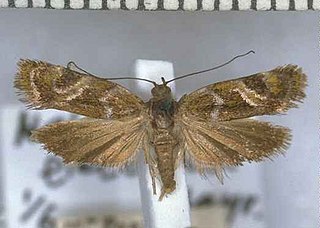
Hierodoris electrica is a moth of the family Oecophoridae. It was described by Edward Meyrick in 1889. It is endemic to New Zealand, where it has been reported from the northern and southern parts of the South Island. The larva of H. electrica has yet to be described. The wingspan is between 15 and 16.5 mm. The ground colour of the forewings is dark brown, with narrow yellow scales overlaying this base colour. The hindwings are brown. The known larval host species is Olearia nummulariifolia.
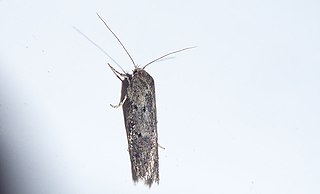
Leptocroca asphaltis is a moth of the family Oecophoridae. It was described by Edward Meyrick in 1911. It is endemic to New Zealand.
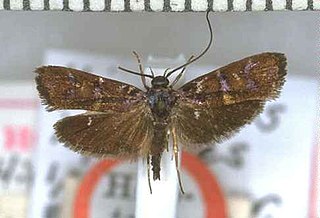
Hierodoris iophanes is a moth of the family Oecophoridae. It was described by Edward Meyrick in 1912. This species can be distinguished from others in its genus by the purple metallic colouration as well as the blue-white mark on its forewings. It is endemic to New Zealand, where it has been recorded from Auckland to Southland. This species inhabits native forest or scrub, with the adults preferring open glades. They are known to be on the wing from November until February and fly during daylight hours, being active on hot sunny days. Larvae feed on the interior of twigs of Prumnopitys ferruginea. The twigs had evidence of oviposition scars of cicadas and the larvae were collected in October after reddish-brown frass indicated their location within the twigs.

Heliostibes vibratrix is a species of moth in the family Oecophoridae. It is endemic to New Zealand. This species inhabits open mountainside habitat and is known to feed on Nothofagus truncata. Yellow-crowned parakeets predate the larvae of H. vibratrix.

Hierodoris callispora is a moth of the family Oecophoridae. It is endemic to New Zealand and can be found throughout the country from south of the Bay of Plenty. This species inhabits native beech forest. Adults of the species have been found where Muehlenbeckia is common. Adults have also been collected from the flowers of Kunzea ericoides. However the larval host is unconfirmed although it has been hypothesised that larvae of this species feed on Kunzea ericoides flowers. Adults of this species can be distinguished by its orange ruff that contrasts with its dark head and thorax. There is a colour form that exists that has orange scales and an orange coloured fringe on the hindwing. Adults have been collected in December and January and are day flying but are also attracted to light at night. A female specimen has been found with a larva in her oviduct suggesting that this species may give birth to larval young.
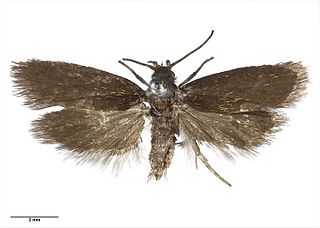
Hierodoris squamea is a moth of the family Oecophoridae. It is endemic to New Zealand and is found in the mountains of Fiordland as well as the Olivine Range in south Westland. This species has a wingspan of between 12 and 13 mm and can be distinguished from similar species as it is very small in size, has a reduced eyespot on its forewings, clearly visible through Scanning Electron Microscope preparations, and has orange-yellow scales overlaying its dark forewing. It prefers open country of tussock grasslands and herbfields at high altitudes. As at 2005 the larvae is unknown. Adults are on the wing in January.

Tingena chloritis is a species of moth in the family Oecophoridae. It is endemic to New Zealand and has been found in the South Island. Larvae of this species feed on leaf litter. The adults of this species are light flyers and are attracted to light.

Tingena nycteris is a species of moth in the family Oecophoridae. It is endemic to New Zealand and has been observed in the North and South Islands. This species inhabits native forest and scrubland and adults are on the wing from October to January.
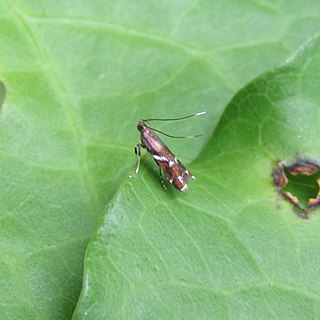
Compsistis bifaciella is a moth of the family Lecithoceridae. It is endemic to New Zealand and found throughout the North Island.

Atomotricha chloronota is a moth in the family Oecophoridae first described by Edward Meyrick in 1914. It is endemic to New Zealand.
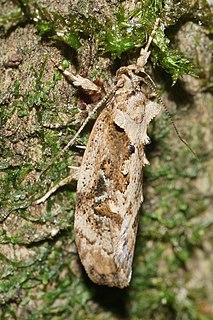
Atomotricha isogama is a moth in the family Oecophoridae first described by Edward Meyrick in 1909. It is endemic to New Zealand.
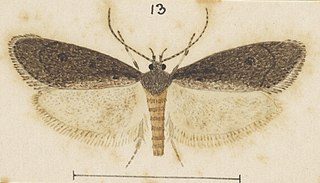
Atomotricha ommatias is a moth in the family Oecophoridae first described by Edward Meyrick in 1883. It is endemic to New Zealand.
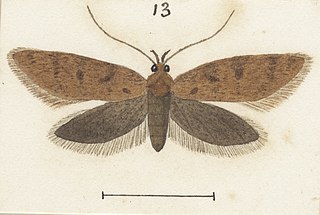
Euchersadaula lathriopa is a moth of the family Oecophoridae. It was first described by Edward Meyrick in 1905. This species is endemic to New Zealand.

Gymnobathra philadelpha is a moth in the family Oecophoridae first described by Edward Meyrick in 1883. It is endemic to New Zealand.

Lathicrossa leucocentra is a species of moth in the family Oecophoridae first described by Edward Meyrick in 1883. It is endemic to New Zealand.
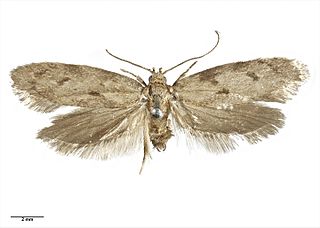
Leptocroca aquilonaris is a moth of the family Oecophoridae first described by Alfred Philpott in 1931. It is endemic to New Zealand. The classification of this moth within the genus Leptocroca is regarded as unsatisfactory and in need of revision. As such this species is currently also known as Leptocroca (s.l.) aquilonaris.

Leptocroca porophora is a moth of the family Oecophoridae first described by Edward Meyrick in 1929. It is endemic to New Zealand. The classification of this moth within the genus Leptocroca is regarded as unsatisfactory and in need of revision. As such this species is currently also known as Leptocroca (s.l.) porophora.
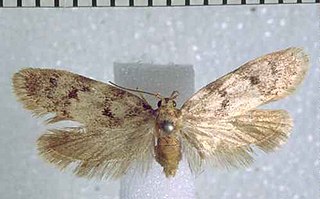
Leptocroca variabilis is a moth of the family Oecophoridae first described by Alfred Philpott in 1926. It is endemic to New Zealand. The classification of this moth within the genus Leptocroca is regarded as unsatisfactory and in need of revision. As such this species is currently also known as Leptocroca (s.l.) variabilis.
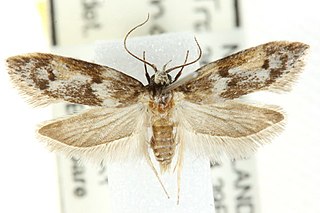
Trachypepla importuna is a moth of the family Oecophoridae first described by Edward Meyrick in 1927. This moth is regarded as having being introduced to New Zealand and is presumed to be native to Australia. T. importuna has been collected in both the North and South Islands of New Zealand. It inhabits native scrub and adults are on the wing in January and February. The placement of this species in the genus Trachypepla is regarded as being unsatisfactory and in need of revision.




















